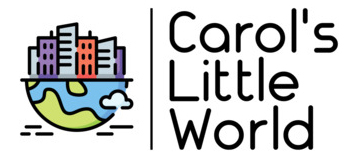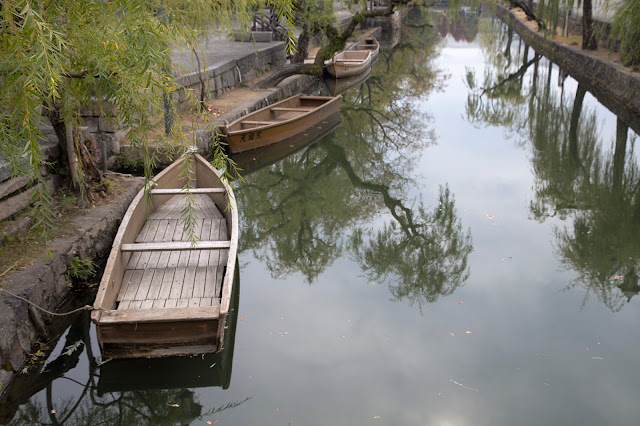Back from Japan and ready to share some of the things I learned while away. Still can’t really believe I went to Japan. Before my trip, I really didn’t know what to think about Japan. Guess I always heard stories of anime, ramen noodles, robots, geisha, gardens, and the like but I never quite put the pieces together. Now I can. At least I can say I’ve been there, did that, didn’t get a T-shirt but that’s only because there wasn’t room in the luggage. I hope you enjoy my top 10 list as much as I enjoyed my travel to the land of the rising sun. Kanpai!
Here are the top 10 things I’ve learned about Osaka, Kyoto, and Art Island, Japan:
10. Artisans abound. Calligraphy, gold leaf, ancient flute playing, the list of art I got to experience on this journey goes on. Artisans abound in Japan. Kyoto is “old Japan” in many ways, yet it’s actually a new, modern, vibrant city in many others. On this trip, I got the sense that, in modern day Japan, the old and the new seem to coexist in a sort of peaceful tranquility. It’s almost as if you get the best of both worlds, and I have to admit I rather like that. The artisans are top notch, with Kyoto offering everything from wool dyeing to culinary cuisine, pottery, performing arts, theater, and everything in-between. Sometimes, the old methods are infused with modern conveniences to make things really magical.
9. Stone gardens, rock gardens, so Zen. Many stone gardens in Kyoto were built hundreds of years ago by the same designers. The rocks represent different things, like water or mountains. Legend (myth actually) has it that once a lance was dipped into the sea to form the islands of Japan. Many Zen gardens play upon these myths and legends to incorporate symbolism from the early days into the beautiful gardens we enjoy today.
8. The museum in the mountain. Famed Chinese architect I.M. Pei was given unlimited budget (!) to build a museum in the Shiga mountains, on the outskirts of Kyoto. The result? The Miho Museum, a place I toured and shot as part of my trip. It’s an amazing place really. I could make a photographic feast just from the ceilings here and don’t even get me started on the tunnels. Phew! I have always wanted to shoot a tunnel. A tunnel by I.M. Pei? Bucket list shot – check!
7. Kyoto is to dye for! Kyoto is home to both indigo and persimmon dyeing, plus a few other methods of dyeing fabrics, cloth, paper, and the like. I got to see this firsthand and managed to bring home not only some great images but also a souvenir. Yes, it’s true, I did something I almost never do on my trips: shop! I purchased an indigo dyed wool scarf (something I never do is buy stuff and we really don’t need wool items here in Austin but, heck, it was Japan and I was in the mood, so there you have it.) The dyeing makes for great colors and images, very cool to enjoy such vibrant colors firsthand. That was a real treat for the eyes and fun to experience, for sure.
6. Gardens can be made of moss. Kyoto is home to an 800 year old moss garden. Yes, in Japan they have entire gardens made of moss. It’s breathtaking! You have not seen a garden until you’ve seen a moss garden. I hope my black thumb did not accidentally kill anything, as I’m so honored I was able to visit an 800 year old garden of moss. As I contemplated growing something like this at home, I was reminded that it took the expert gardeners of Japan 800 years to perfect Kyoto’s garden of moss. I would probably kill it in two days (or less) but, if you are so inclined, you too can visit a garden of moss in Kyoto.
5. The bamboo forest grows tall. If moss gardens were not enough, Kyoto is also home to the famous bamboo forest. Yes, it sways in the wind. Yes, you can hear it growing. If you listen carefully, it makes a sound. We were fortunate enough to tour both the “official” public bamboo forest and one of our very own, a private one. Yes, you read that correctly. On my trip, I got to tour a private bamboo forest. Oh, what fun that was! I got to do ghost images in my own private bamboo forest. As I walked through the rows and rows of bamboo, I realized that it actually can get quite tall so this little fact comes in at number five on my list of things I learned on my trip.
4. Kyoto has been called the “Land of 1000 temples” for good reason. Kyoto has over 1000 temples, shrines, Shinto hovels, and Buddhist shacks, most of which are on the east side of town, but many of which are all over, literally all over town. There are small “neighborhood” shrines, little temples, slight gardens, and the like, many of which are just as photogenic (sometimes more so!) than the “big boys.” Of course, if you have to, if you must visit the “big boys,” they are there too. In Kyoto, you can take your pick of temples. Mostly, I opted for temples I thought might not be overrun with tourists, preferring to enjoy the small empty ones, but your results may vary. Good luck and happy temple hopping!
3. You say “Geisha,” I say, “Geiko,” she says, “Maiko,” no matter, the girl’s got bling. In Kyoto, they are called Geiko, not Geisha, and they originated in Kyoto (they are called Geisha in Tokyo and other parts of Japan but not in Kyoto.) On my trip. I learned a lot about these ladies, even having lunch with a Maiko. Some facts to share: the original purpose of the Geiko was to serve tea, which they still do, dressed in a tradition kimono and full make-up. Maiko and Geiko dance and perform as well, they tend to study music, learning how to play instruments like drums or flute. A Maiko is an apprentice Geiko and she wears a red band on her collar to distinguish herself from the Geiko, who wears a white band. It takes four to six years of training to become a Geiko, during which time they cannot marry (if they marry, they have to stop their training.) The cost to become a Maiko is significant. She does not get paid, she cannot have a cell phone (she can, however, write letters, which most do.) She gets one tatami mat to live on and, yes, it takes several hours and lots of help to put on her make up. She gets five days off a year. There are only 250 Maiko and Geiko in Kyoto in total. Most of them, once they begin to work, are private contractors and get paid by the tea houses. The kimono they wear can be very heavy and the ornament that adorns their belt is jokingly referred to as a “walking house,” because it can cost anywhere from $100,000 to $250,000 (or more. They are made with real jewels and the like.) Often the kimono and obi are made with gold thread so they are an expensive, heavy, burden, albeit quite charming and totally great photographic subjects.
2. Islands by the sea take many forms. Japan is made of many islands. During this trip, I got to visit some of them, including Art Island or Naoshima, home to the fabulous (spa like) Benesse House and the glorious Yayoi Kusama pumpkins, which were totally fun. (Yes, I had a view of the yellow pumpkin from my private balcony. Ah, the life!) Japan also has what I dubbed “airport island” and other small islands. A lot of time they run out of room and construct islands so they can put stuff on them, like the airport. It gets things out of the way and, if you get bored, you can always put up a spotted pumpkin. Works for me, fact of life in Japan.
1. “One tatami mat back.” It’s my new motto! In Japan there are scrolling gardens and strolling gardens. Strolling gardens are designed for you to walk through them, with the view changing as you move about the garden (sometimes, even walking back from where you started gives you an entirely new view of the landscape. You should try this if you ever get to visit an authentic strolling garden.) Scrolling gardens, on the other hand, are designed to unravel before you, much the same way you would view a scroll (like reading.) Most scrolling gardens are designed to be viewed, “one tatami mat back in a seated or resting position” (to quote our guide.) This is a metaphor for life! If you are too close to a problem, get back, sit, and re-think it. Get “one tatami mat back” from a situation to really see it best. It really works wonders for solving problems and, even if your problems are not solved, you enjoyed a quiet moment of contemplation with a wonderful garden view.
Some runners up:
- The food! Kyoto is a culinary capitol for good reason. There is authentic French pastry as well as Italian, Indian, and lots of other types of food there, not to mention authentic Japanese style food including bento boxes, Ramen, sushi, tempura, and the like, all fresh and good. We joked that we were able to navigate by the Star…bucks…as they even have several of the American coffee shops there, including a Starbucks Reserve shop (I visited my first one in Kyoto, as I never made it into one when I went to Seattle. Go figure!)
- Benesse House art. Like MOMA by the sea, Benesse House is kind of like what you would get if you combined a modern art museum with a beach and the Great Pumpkin Charlie Brown. It was such a wonderful, inspiring place to visit. I got to see a lot of James Turrell, some Monet, some Sugimoto, and a lot of modern art.
- Japanese toilets. Wow! In Japan, they have heated toilet seats, built-in bidets, touch screen technology with a special button to play music. It’s amazing really what the good people of Toto have done to such a humble home fixture.
- The arcade. In Kyoto, they have a covered shopping area that’s like a mall really, with tons of great shopping, restaurants, and the like. It stretches for miles and is fun to visit. If you come out the other side, you get rewarded with a place called Bel Amer which is a chocolate shop that sells soft serve ice cream which is the bomb. I never got to try the swirl but I was told it was white chocolate and dark chocolate mixed, but it’s not the white chocolate we get in the ‘States, not as sweet but totally delicious. I did manage to get a cup of “regular” chocolate and it was really great. Highly recommend making it down the arcade, up Sanjodori, to find this place and dig into the chocolaty goodness. Oh how I am going to miss Bel Amer and the arcade in Kyoto, it was like a home away from home.
- The bullet train. It was a bit tricky navigating this one but, once you hop aboard, it’s a wonderful experience. Worth a trip and makes travel across Japan a lot easier.
You probably don’t even have to ask if I’d go back to Japan, rather you’re wondering (as I am) just about when I’m slated to move and should you forward the mail. Yeah, it was that kind of trip.
Until next time…

